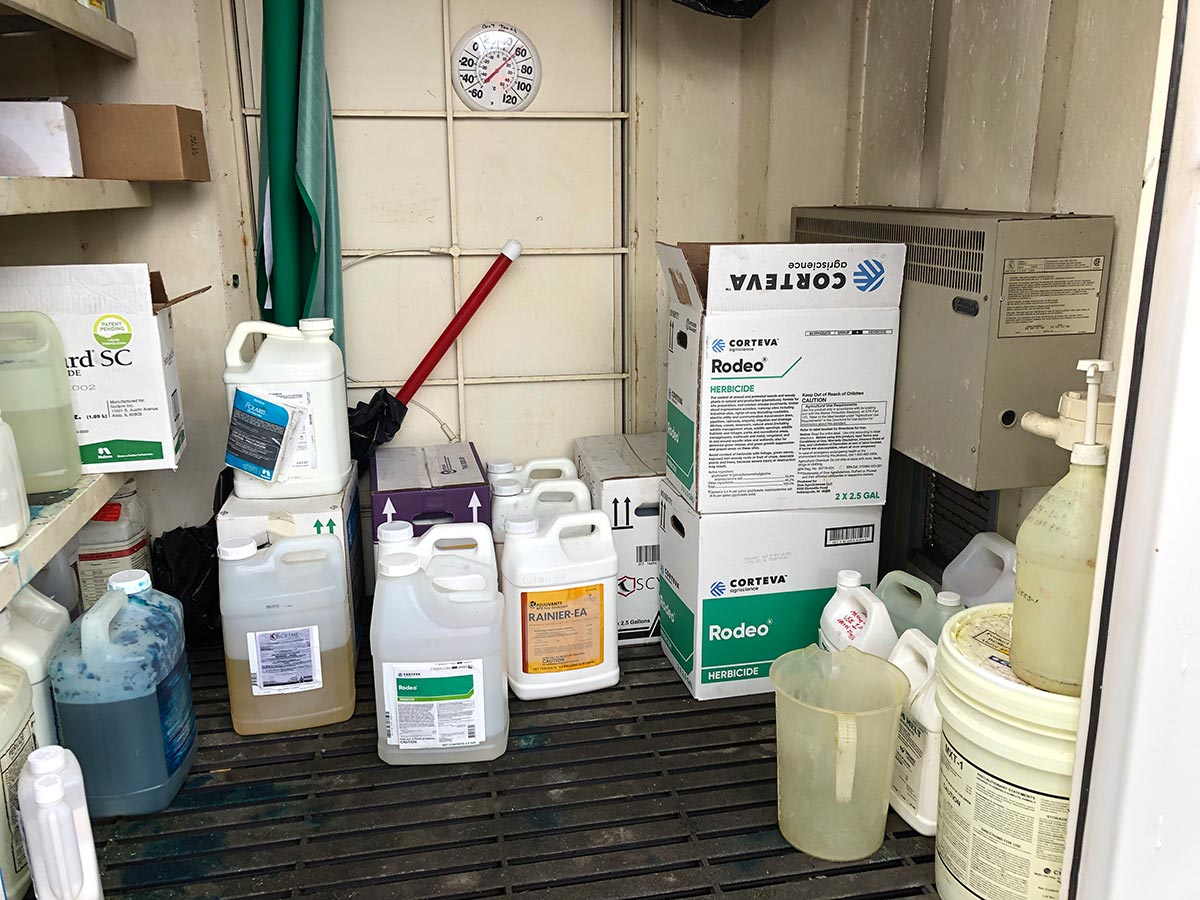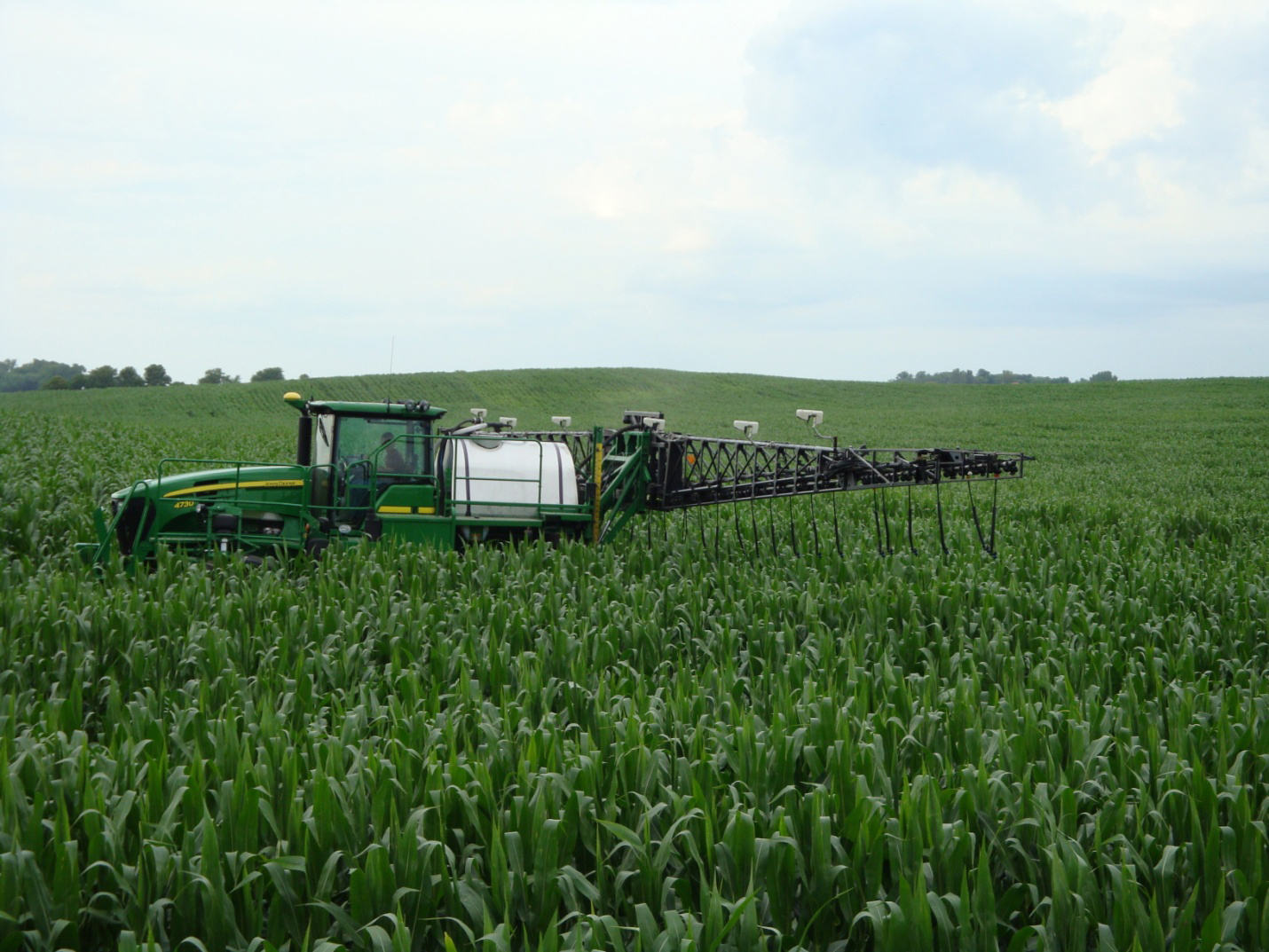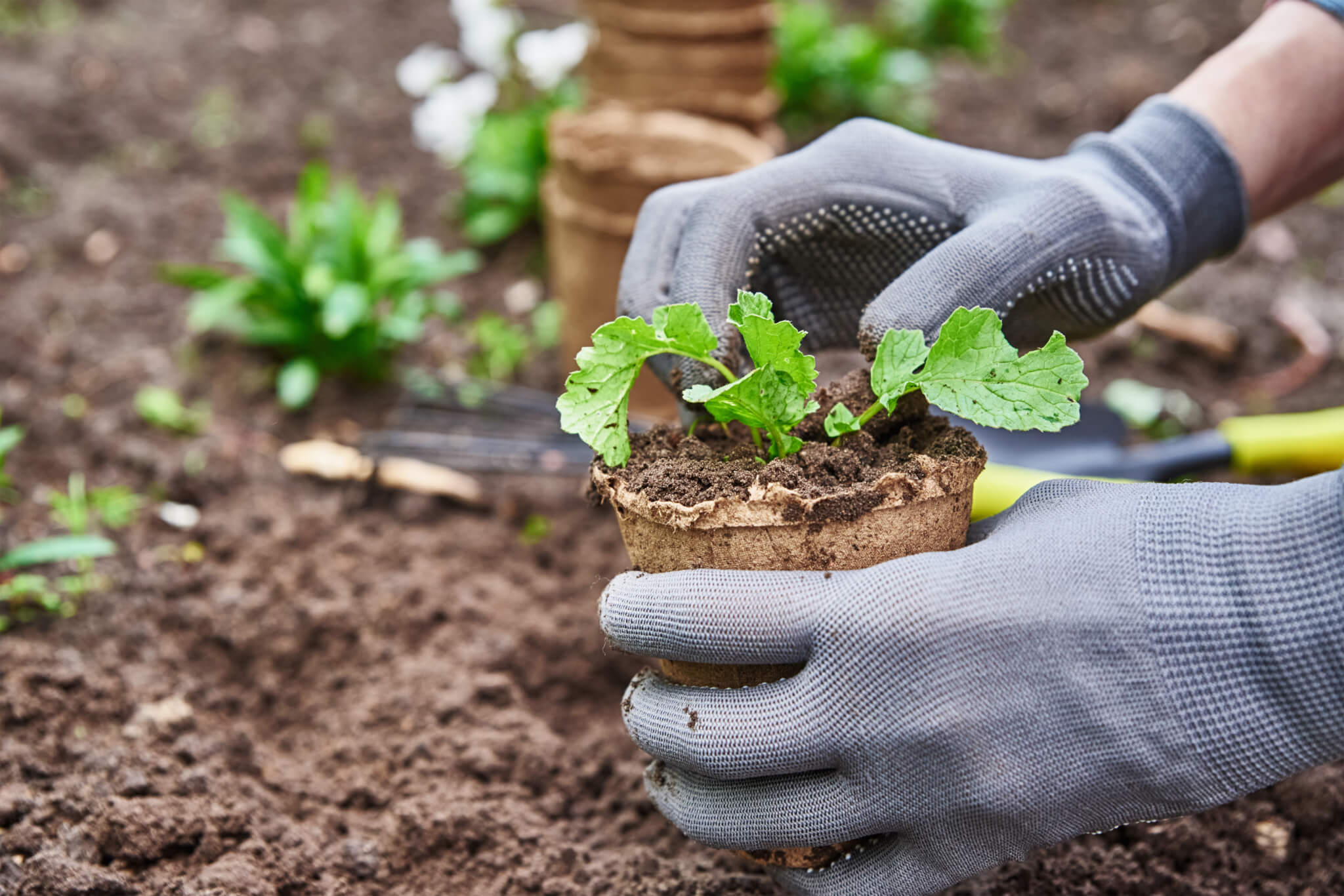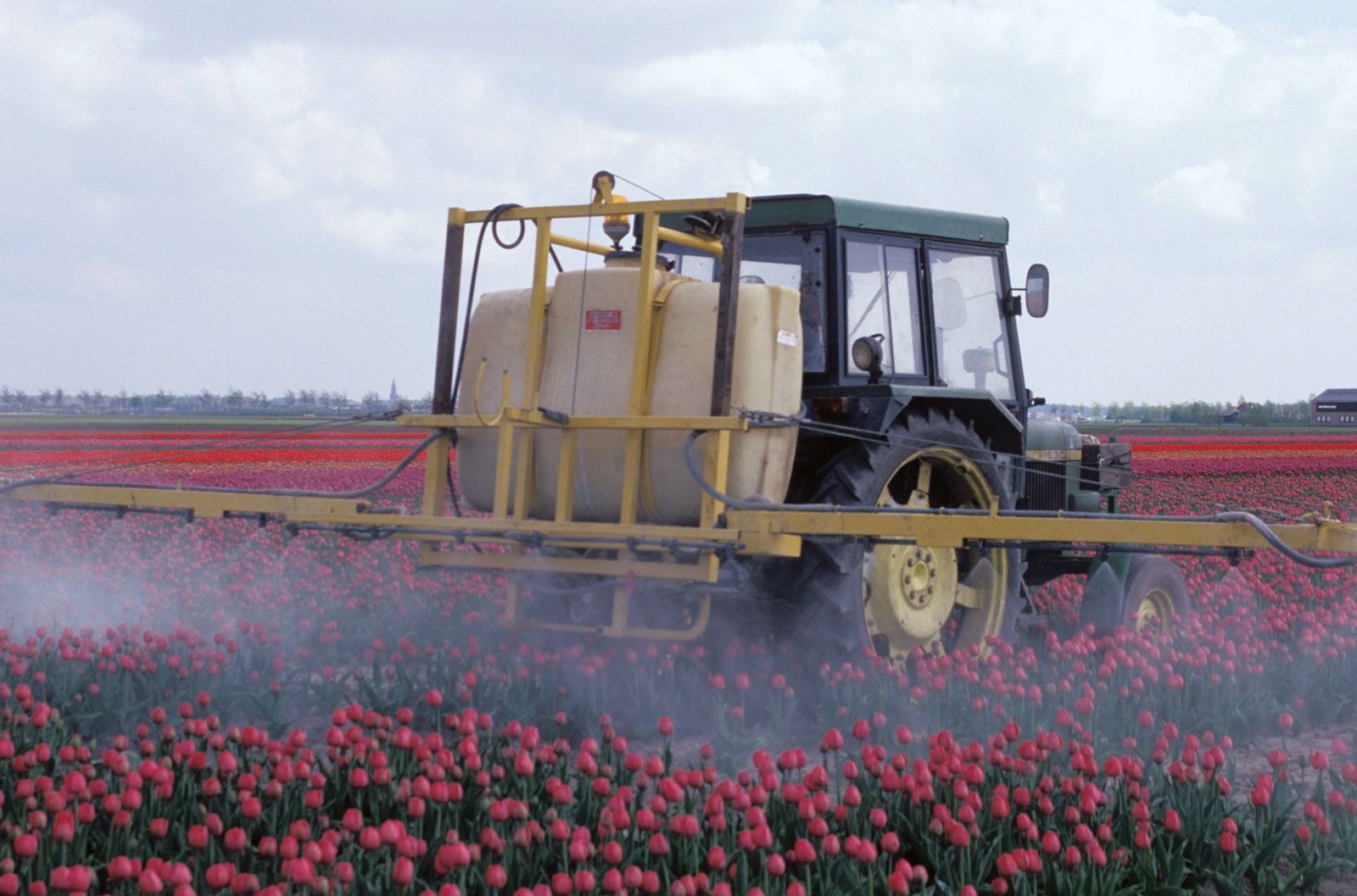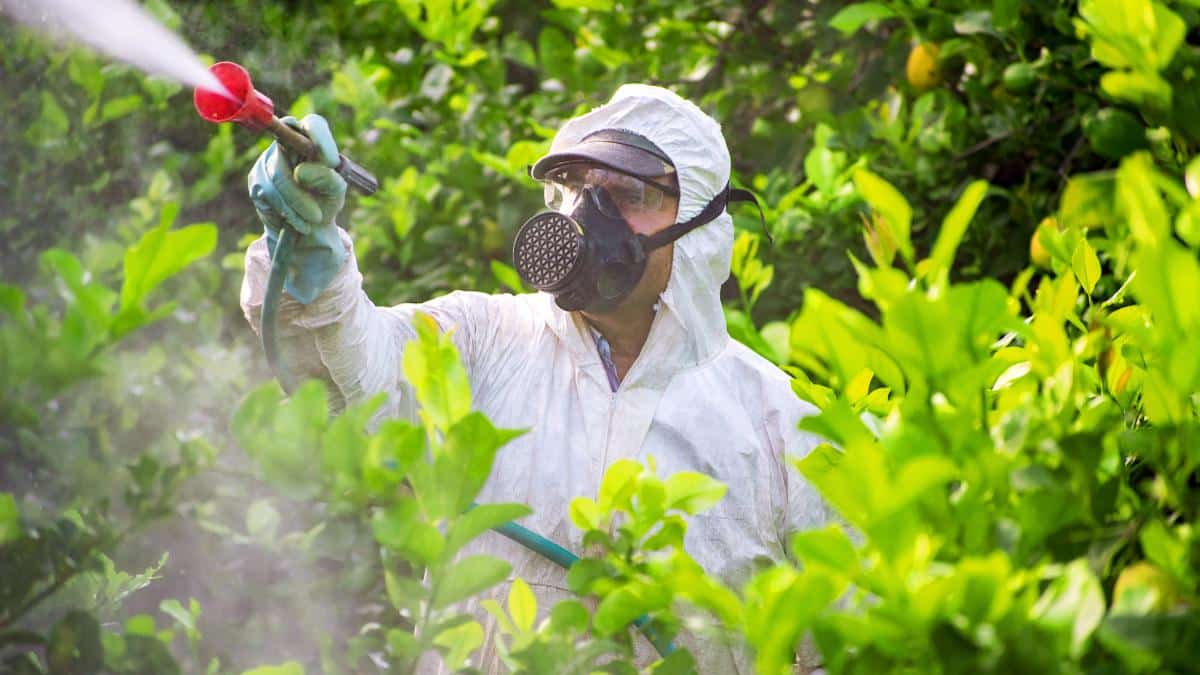Home>Gardening News and Trends>Latest News>What Is The Original Intention Of Pesticides And Chemicals We Use On American Farms Today?
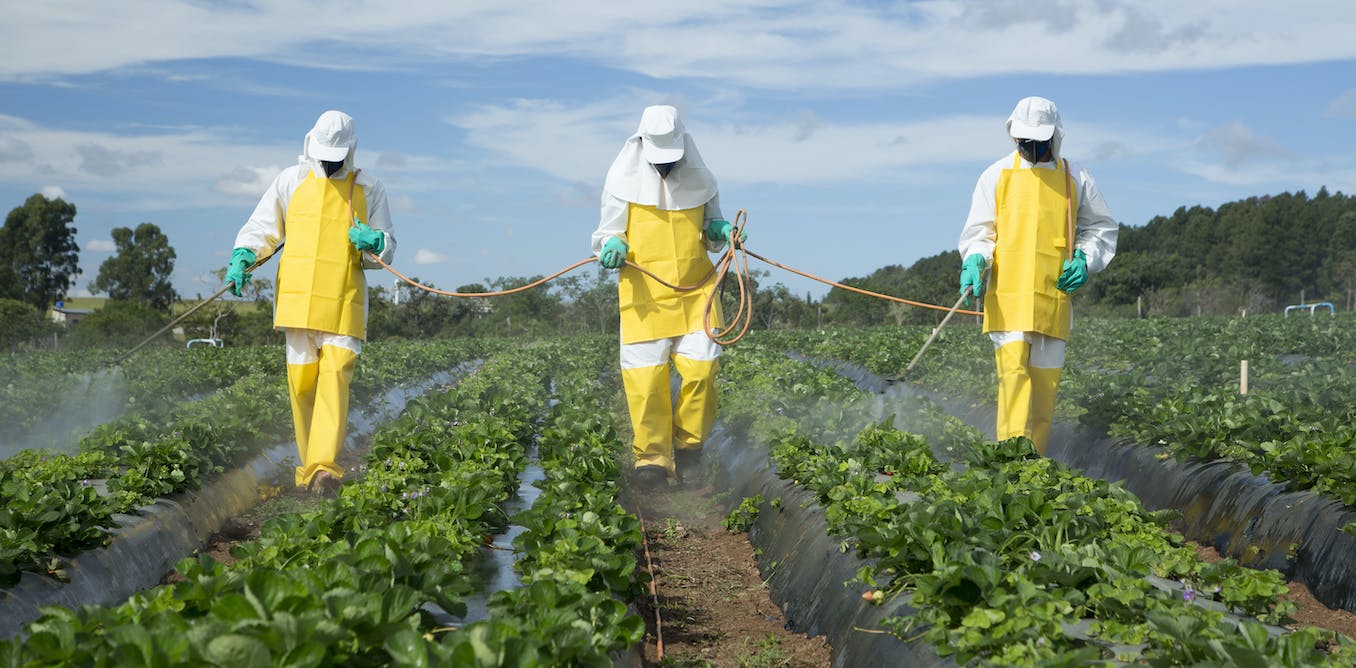

Latest News
What Is The Original Intention Of Pesticides And Chemicals We Use On American Farms Today?
Modified: February 10, 2024
Discover the true intention behind the use of pesticides and chemicals on modern American farms. Stay updated with the latest news on this pressing issue.
(Many of the links in this article redirect to a specific reviewed product. Your purchase of these products through affiliate links helps to generate commission for Chicagolandgardening.com, at no extra cost. Learn more)
Table of Contents
- Introduction
- Historical Background of Pesticides and Chemicals on American Farms
- The Original Intention of Pesticides and Chemicals in Agriculture
- Advantages and Benefits of Pesticides and Chemicals in Farming
- Negative Consequences and Concerns Associated with Pesticides and Chemicals
- Current Regulations and Safety Measures for Pesticide Use in the US
- Sustainable Alternatives to Traditional Pesticides and Chemicals
- Conclusion
Introduction
Pesticides and chemicals have become integral parts of modern agriculture, playing a crucial role in increasing crop yields and ensuring food security. These substances are designed to control pests, diseases, and weeds that pose significant threats to crops, thereby improving productivity and protecting the quality of agricultural products. However, as the use of pesticides and chemicals has increased over the years, concerns about their potential environmental and health impacts have also risen.
This article aims to explore the original intention behind the use of pesticides and chemicals on American farms today. By examining the historical background, benefits, and consequences associated with their usage, as well as the current regulations and safety measures in place, we can gain a comprehensive understanding of the role these substances play in modern agriculture.
The development and utilization of pesticides and chemicals in agriculture have a long history, dating back to the early 20th century. Initially, the primary goal was to combat various pests and diseases that threatened crop production, leading to significant losses for farmers. Early pesticides often consisted of substances like sulfur and copper, which were relatively safe and effective at controlling certain pests and diseases.
As agricultural practices and technology advanced, synthetic pesticides and chemicals were discovered and developed. These substances offered improved efficacy and targeted control, allowing farmers to better protect their crops and increase yields. The original intention behind the use of these pesticides and chemicals was to provide farmers with effective tools to combat pests and diseases, ultimately increasing food production to meet the growing demands of a rapidly expanding population.
Furthermore, pesticides and chemicals were seen as a means to reduce post-harvest losses due to pests and diseases, ensuring that a greater proportion of crops could reach the market. This not only benefits farmers by improving their profitability but also contributes to food security and availability for consumers.
However, with the increased use of synthetic pesticides and chemicals, concerns regarding their environmental and health effects have emerged. There is growing evidence that some pesticides can persist in the environment, contaminate water bodies, and have adverse impacts on non-target organisms such as bees, butterflies, and other beneficial insects. Furthermore, there are concerns about the potential health risks associated with pesticide residues in food and the long-term effects of exposure to these substances on farm workers and nearby communities.
Historical Background of Pesticides and Chemicals on American Farms
The use of pesticides and chemicals in American agriculture has a rich and complex history that dates back to the early 20th century. Before the advent of modern synthetic pesticides, farmers relied on traditional methods such as crop rotation, manual removal of pests, and the use of natural substances like sulfur and copper to control pests and diseases.
The first major breakthrough in pesticide development came with the discovery of DDT (dichlorodiphenyltrichloroethane) in the 1930s. DDT quickly gained popularity due to its broad-spectrum effectiveness against a wide range of pests. It was widely used in agriculture, public health, and even in military applications during World War II. However, its persistent nature and harmful effects on the environment and wildlife eventually led to its ban in the United States in 1972.
After the ban on DDT, there was a shift towards the development of more targeted and environmentally friendly pesticides. This period marked the emergence of integrated pest management (IPM) strategies, which aimed to reduce the reliance on chemical pesticides by incorporating a combination of cultural practices, biological control agents, and judicious use of pesticides as a last resort.
In the 1970s and 1980s, there was a significant increase in the use of synthetic herbicides like glyphosate, which revolutionized weed control in agriculture. Glyphosate-based herbicides, commonly known by the brand name Roundup, became widely adopted due to their effectiveness and convenience. However, concerns about the development of herbicide-resistant weeds and the potential ecological impacts of widespread herbicide use have raised questions about the long-term sustainability of such practices.
The 1990s saw the rise of genetically modified (GM) crops, which were engineered to be resistant to specific pests or herbicides. This technology allowed farmers to reduce pesticide use and increase crop yields. However, the use of GM crops also stirred controversy due to concerns about their potential impacts on human health and the environment.
In recent years, there has been a growing interest in organic farming practices as an alternative to conventional agriculture heavily reliant on synthetic pesticides and chemicals. Organic farming emphasizes the use of natural methods to manage pests and diseases, such as crop rotation, biological control, and the use of organic-approved pesticides and fertilizers.
While the use of pesticides and chemicals in American agriculture has undoubtedly contributed to increased food production and improved farm efficiency, it has also raised significant concerns about environmental sustainability, human health, and food safety. The next sections will delve into the original intention, advantages, concerns, and regulatory frameworks associated with the use of pesticides and chemicals in modern farming practices.
The Original Intention of Pesticides and Chemicals in Agriculture
The original intention behind the use of pesticides and chemicals in agriculture was to combat pests, diseases, and weeds that threatened crop productivity and quality. Farmers have always faced significant challenges in protecting their crops from these threats, as they can cause devastating losses and reduce overall yields. Pesticides and chemicals were developed as tools to address these challenges and provide effective solutions.
The primary goal of using pesticides and chemicals in agriculture was to increase food production and ensure food security. By controlling pests and diseases, farmers can prevent or minimize crop damage and improve overall yields. This not only benefits the farmers themselves, but it also contributes to meeting the demands of a growing population and helps maintain stable food supplies.
Pesticides and chemicals were designed to provide targeted control against specific pests or diseases, allowing farmers to protect their crops without significant damage. Different types of pesticides, including insecticides, herbicides, and fungicides, were developed to target specific groups of pests or pathogens, enhancing their effectiveness while minimizing potential harm to non-target organisms.
Additionally, the use of pesticides and chemicals in agriculture aimed to reduce post-harvest losses. By preventing or managing pests and diseases throughout the growing season, farmers can ensure that a larger proportion of their crops reach the market in optimal condition. This not only improves the profitability of farmers but also ensures a consistent and reliable food supply for consumers.
Furthermore, pesticides and chemicals were intended to provide convenience and efficiency in agricultural practices. Instead of relying solely on manual labor or time-consuming traditional methods, farmers could use these substances to effectively control pests and diseases on a larger scale in a shorter amount of time. This allowed for increased efficiency and productivity in farming operations.
It is important to note that the original intention of using pesticides and chemicals in agriculture was based on the understanding and knowledge available at that time. As scientific research and understanding of the potential impacts of these substances have advanced, concerns about their environmental and health effects have emerged. The intention was to provide effective tools for farmers, but the unintended consequences associated with their use have become more apparent over time.
Although the original intention behind the use of pesticides and chemicals in agriculture was to increase productivity and protect crops, it is necessary to assess their long-term sustainability, environmental impact, and potential risks to human health. The following sections will delve into the advantages, negative consequences, current regulations, and sustainable alternatives associated with the use of pesticides and chemicals on American farms today.
Advantages and Benefits of Pesticides and Chemicals in Farming
The use of pesticides and chemicals in farming offers several advantages and benefits that contribute to the success of modern agriculture. These substances are designed to address various challenges faced by farmers, and their utilization has resulted in significant improvements in crop productivity, quality, and overall farm efficiency.
One of the primary advantages of pesticides and chemicals is their ability to effectively control pests, diseases, and weeds. By targeting and eliminating these threats, farmers can protect their crops from potential damage and yield losses. This, in turn, ensures a more abundant and reliable food supply for consumers.
Pesticides, such as insecticides and fungicides, play a crucial role in safeguarding crops against insect pests and fungal diseases. These substances effectively reduce the population of damaging insects and prevent the spread of harmful pathogens, ensuring healthier and more robust plants. By controlling pests and diseases, farmers can enhance crop quality by reducing blemishes, deformities, and disease symptoms that may affect the marketability of their produce.
Furthermore, herbicides help in the management of weeds, which compete with crops for essential resources such as nutrients, water, and sunlight. By minimizing weed growth, herbicides ensure that crops have access to these resources, leading to improved growth, development, and ultimately, higher yields. Herbicides also allow farmers to practice no-till or reduced-till farming techniques, which minimize soil erosion, enhance water retention, and improve overall soil health and structure.
The use of pesticides and chemicals in farming provides convenience and efficiency, enabling farmers to save time, reduce labor costs, and optimize resource utilization. Instead of relying solely on manual labor or traditional pest control methods, farmers can utilize pesticides to control pests and diseases on a larger scale more efficiently. This allows for increased productivity and improved management of farm operations.
Pesticides and chemicals also contribute to reducing post-harvest losses by protecting crops from pests and diseases throughout the growing season. By preventing or mitigating damage, farmers can maximize the yield of high-quality produce that reaches the market, increasing their profitability and reducing waste.
Moreover, the utilization of pesticides and chemicals facilitates the production of a wide variety of crops, including those that are difficult to grow due to their susceptibility to specific pests or diseases. With effective pest control measures in place, farmers can cultivate a diverse range of crops, thus ensuring a more varied and nutritious diet for consumers.
Overall, the advantages and benefits of using pesticides and chemicals in farming contribute significantly to the success and sustainability of modern agriculture. They enhance crop productivity, protect crops from pests and diseases, improve crop quality, reduce post-harvest losses, optimize resource utilization, and enable the cultivation of a diverse range of crops. However, it is important to carefully manage their use to minimize potential negative consequences and ensure environmental sustainability and human health safety.
Negative Consequences and Concerns Associated with Pesticides and Chemicals
While the use of pesticides and chemicals in farming offers numerous benefits, there are also negative consequences and concerns associated with their usage. It is essential to acknowledge and address these issues to ensure the long-term sustainability of agricultural practices and protect the environment and human health.
One of the main concerns is the potential environmental impact of pesticides and chemicals. Some pesticides can persist in the environment, leading to contamination of water bodies and soil. Runoff from agricultural fields can carry these substances into nearby streams, rivers, and lakes, potentially harming aquatic organisms and disrupting ecosystems. Additionally, certain pesticides have been linked to declines in beneficial insects like bees, butterflies, and other pollinators, which play a crucial role in crop production and ecosystem health.
There are also concerns about the development of pesticide resistance among pests and weeds. Over time, pests and weeds can evolve and develop resistance to the pesticides used against them, rendering them less effective. This necessitates the constant development of new, more potent pesticides or the implementation of alternate pest control strategies, which adds to the complexity and cost of agricultural production.
Furthermore, the potential health risks associated with pesticide residues in food and occupational exposure to pesticides are significant concerns. Pesticide residues can be found on the surface of fruits, vegetables, and other agricultural products, which can be ingested by consumers. Long-term exposure to certain pesticides has been linked to various health issues, including developmental delays, hormonal disruption, and increased risk of certain cancers. Agricultural workers and people living near farms where pesticides are applied are particularly vulnerable to exposure and associated health risks.
The impact of pesticides and chemicals on non-target organisms, such as beneficial insects, birds, and wildlife, is another concern. These substances may unintentionally harm or disrupt the ecological balance by killing or negatively affecting non-target species. For example, certain insecticides can harm populations of bees, which are crucial pollinators for many crops, leading to a potential decline in crop yields and biodiversity.
The overreliance on pesticides and chemicals can also have unintended consequences for soil health and ecosystem services. Excessive use of pesticides can disrupt the natural balance of soil microorganisms, which are essential for nutrient cycling and soil fertility. This can lead to soil degradation and reduced agricultural productivity over time. Moreover, the use of certain pesticides may harm natural predators that help control pest populations, resulting in a need for even heavier pesticide applications.
Recognizing and addressing these negative consequences and concerns is crucial for sustainable agricultural practices. It requires a holistic approach that considers the impact on the environment, human health, and the long-term viability of farming systems. Implementing integrated pest management (IPM) strategies, promoting organic farming practices, and investing in research and development of safer and more sustainable alternatives to chemical pesticides are some of the steps that can be taken to mitigate these concerns and ensure a balanced and resilient agricultural system.
Current Regulations and Safety Measures for Pesticide Use in the US
Pesticide use in the United States is tightly regulated to protect human health, ensure environmental safety, and promote responsible agricultural practices. The Environmental Protection Agency (EPA) is the federal agency responsible for overseeing these regulations and establishing guidelines for pesticide registration, labeling, and use.
The EPA enforces a comprehensive regulatory framework to ensure the safe and effective use of pesticides. Before a pesticide can be sold or used, it must undergo rigorous testing to assess its potential risks to human health and the environment. Manufacturers are required to submit extensive data on the pesticide”s toxicity, environmental fate, and impacts on non-target organisms.
Pesticides are assigned specific labels that provide information on proper handling, use, storage, and disposal. These labels also outline any precautions or protective equipment that should be used during application. It is essential for farmers and pesticide applicators to carefully read and follow label instructions to ensure safe and effective use.
The EPA establishes tolerances for pesticide residues in food, specifying the maximum amount of residue that is allowed to remain on crops at the time of harvest. These tolerances are set based on scientific risk assessments to ensure that the residue levels do not pose unacceptable risks to human health. The US Food and Drug Administration (FDA) monitors and enforces these tolerances to protect consumers from exposure to unsafe levels of pesticide residues in food.
In addition to federal regulations, individual states may have additional requirements and regulations regarding pesticide use. These state-level regulations may include restrictions on certain pesticides, buffer zones near schools or residential areas, and certification or training programs for pesticide applicators.
To promote responsible pesticide use, the EPA encourages the adoption of integrated pest management (IPM) practices. IPM is a systematic approach that combines various pest management strategies, including biological control, cultural practices, and the judicious use of pesticides. The goal of IPM is to minimize the use of chemical pesticides by employing a range of preventive and control methods, while still effectively managing pests and protecting crop yields.
Various safety measures and protections are in place to minimize the risks associated with pesticide use. These include personal protective equipment (PPE) requirements for pesticide handlers, restricted-entry intervals to limit exposure to treated areas, and requirements for adequate worker training and reporting of pesticide incidents.
In addition, the EPA regularly reviews and reassesses registered pesticides to ensure they meet current safety standards. If scientific evidence suggests that a pesticide poses unacceptable risks, the EPA has the authority to revoke or restrict its use.
Overall, the current regulations and safety measures for pesticide use in the United States aim to protect human health, reduce environmental impacts, and promote responsible agricultural practices. In combination with education and training programs, these regulations contribute to the safe and sustainable use of pesticides in American agriculture.
Sustainable Alternatives to Traditional Pesticides and Chemicals
As concerns about the environmental and health impacts of traditional pesticides and chemicals in farming have grown, there has been a growing interest in exploring and adopting sustainable alternatives. These alternatives aim to reduce reliance on synthetic pesticides while promoting environmentally friendly and socially responsible farming practices. Here are some of the promising sustainable alternatives that are being embraced by farmers:
1. Biological Control: Biological control involves the use of natural enemies, such as beneficial insects, parasitoids, and predators, to control pest populations. By introducing these natural enemies into the ecosystem, farmers can effectively manage pests without resorting to chemical pesticides. This approach helps maintain ecological balance and minimizes the risk of developing pesticide resistance.
2. Crop Rotation and Polyculture: Rotating different crops in a planned sequence helps break pest and disease cycles. Certain crops act as natural pest suppressors or offer habitat for beneficial insects, reducing the need for pesticides. Polyculture, which involves growing multiple crops together, can also disrupt pest cycles and promote a more diverse and balanced ecosystem.
3. Integrated Pest Management (IPM): IPM is a holistic approach that incorporates multiple strategies to manage pests, including preventive measures, cultural practices, biological control, and the judicious use of pesticides as a last resort. By combining various methods, farmers can effectively control pests while minimizing the impact on human health and the environment.
4. Crop Resistant Varieties: Breeding or genetically modifying crops to be resistant to specific pests or diseases can reduce the need for chemical pesticides. By using crop varieties that are naturally resistant, farmers can minimize pest damage and achieve sustainable pest control without relying heavily on synthetic chemicals.
5. Physical Barriers and Trap Crops: Physical barriers, such as nets, screens, and row covers, can prevent pests from reaching crops, reducing the need for chemical interventions. Trap crops, which are plantings specifically designed to attract pests away from main crops, serve as an effective tool to divert and control pest populations in a targeted manner.
6. Organic Farming Practices: Organic farming utilizes natural and ecologically sound practices to manage pests and maintain soil fertility. It emphasizes building healthy soil, promoting biodiversity, and avoiding the use of synthetic pesticides and fertilizers. Organic farmers rely on practices such as crop rotation, composting, beneficial insects, and organic-approved pesticides when necessary.
7. Precision Agriculture: Precision agriculture technologies, such as remote sensing, GPS, and data analytics, enable farmers to optimize the use of resources and target interventions where they are most needed. By accurately identifying pest hotspots and applying pesticides only where necessary, farmers can minimize unnecessary chemical use and reduce impacts on the environment.
These sustainable alternatives offer promising solutions for farmers seeking to reduce their reliance on traditional pesticides and chemicals. However, each approach has its own set of advantages and limitations, and the choice of alternative methods may vary depending on specific crop types, regional conditions, and the severity of pest pressures. Encouraging research and innovation, providing education and training, and fostering collaboration between researchers, farmers, and policymakers are crucial for the successful adoption and implementation of sustainable alternatives in modern agriculture.
Conclusion
The use of pesticides and chemicals in American agriculture has played a significant role in increasing crop yields and ensuring food security. These substances were originally intended to combat pests, diseases, and weeds that pose threats to crops, protecting their quality and productivity. Pesticides and chemicals have provided numerous advantages and benefits to farmers, including improved pest control, increased crop quality and yields, reduced post-harvest losses, and enhanced farm efficiency.
However, there are also negative consequences and concerns associated with the use of pesticides and chemicals. Environmental impacts such as water and soil contamination, pesticide resistance, and harm to non-target organisms raise important questions about the long-term sustainability of these practices. Human health risks, including exposure to pesticide residues in food and occupational hazards, also require careful consideration.
The current regulatory framework in the United States, overseen by the EPA, aims to ensure the responsible use of pesticides and chemicals. These regulations, along with safety measures and guidelines, help protect human health, mitigate environmental impacts, and promote sustainable agricultural practices. IPM strategies, organic farming practices, and the exploration and adoption of sustainable alternatives offer promising approaches that can further reduce reliance on synthetic pesticides and chemicals.
It is essential to strike a balance between maximizing agricultural productivity and minimizing the potential negative consequences associated with pesticide use. Holistic approaches that incorporate multiple strategies, such as biological control, crop rotation, and precision agriculture, offer potential solutions to reduce reliance on synthetic pesticides and promote sustainable farming practices
Continued research, education, and collaboration among farmers, researchers, policymakers, and consumers are vital for the successful implementation of sustainable alternatives in modern agriculture. By working together, we can achieve a more balanced and resilient agricultural system that ensures food security, protects the environment, and prioritizes the health and well-being of farmers and consumers alike.
